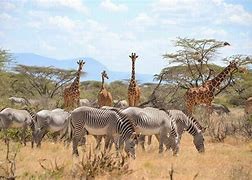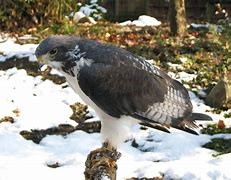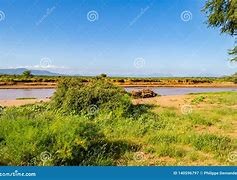Samburu National Park, nestled in the arid landscapes of northern Kenya, offers a captivating wilderness experience unlike any other. Renowned for its unique wildlife, stunning landscapes, and rich cultural heritage, Samburu beckons travelers seeking an authentic African safari adventure. In this comprehensive guide, we’ll explore the location, activities, attractions, best time to visit, transportation options, and accommodation choices available in Samburu National Park.
Location Samburu National Park
Samburu National Park is situated in the Samburu County of northern Kenya, approximately 350 kilometers (217 miles) from Nairobi, the capital city. The park covers an area of 165 square kilometers (64 square miles) along the banks of the Ewaso Ng’iro River. Its location in the semi-arid region of northern Kenya gives it a distinct landscape characterized by acacia woodlands, scrubland, and rocky outcrops.
Activities done in Samburu National Park
Samburu National Park offers a variety of activities that allow visitors to explore its diverse ecosystems and encounter its abundant wildlife. Here are some of the main activities available in the park:
Game Drives at Samburu National Park
Game drives are the quintessential safari experience in Samburu National Park. Led by experienced guides, these drives take visitors deep into the park’s wilderness in search of iconic African wildlife. The park is home to a variety of species, including elephants, lions, leopards, cheetahs, giraffes, zebras, and the “Samburu Special Five” – the reticulated giraffe, Grevy’s zebra, Beisa oryx, gerenuk, and Somali ostrich.
Birdwatching at Samburu National Park
With over 450 bird species recorded within its boundaries, Samburu National Park is a paradise for birdwatchers. Visitors can spot a diverse array of birds, including raptors, waterfowl, hornbills, weavers, and the rare vulturine guinea fowl. The park’s varied habitats, ranging from riverine forests to open savannahs, provide ample opportunities for birdwatching enthusiasts.
Cultural Visits
A visit to Samburu National Park offers more than just wildlife encounters – it provides a window into the rich cultural heritage of the Samburu people. Visitors can embark on cultural tours to nearby Samburu villages, where they can interact with local communities, learn about traditional customs and practices, and witness age-old ceremonies such as dances and rituals. These cultural experiences offer a deeper understanding of the region’s history and way of life.
Nature Walks
Guided nature walks offer a chance to explore the park on foot and appreciate its smaller wonders, from intricate insect life to delicate plant species. Led by knowledgeable guides, these walks provide insights into the park’s ecology, geology, and biodiversity, allowing visitors to connect with nature on a more intimate level. Nature walks are also an excellent opportunity for photography enthusiasts to capture the park’s beauty up close.
Night Drives
Night drives offer a unique perspective on Samburu’s nocturnal wildlife, including elusive predators such as leopards and hyenas. Led by skilled guides armed with spotlights, these excursions venture into the park after dark, providing thrilling encounters with creatures that are seldom seen during the day. Night drives offer a chance to witness the African bush come alive under the cover of darkness.
Attractions in Samburu National Park
Samburu National Park is home to a wealth of natural and cultural attractions that showcase the region’s beauty and diversity. Here are some of the park’s top attractions:
Ewaso Ng’iro River
The lifeblood of Samburu National Park, the Ewaso Ng’iro River sustains a rich diversity of wildlife in an otherwise arid landscape. Visitors can enjoy scenic drives along the riverbanks, observing animals coming to drink and bathe, or take boat safaris to explore the river and its surroundings. The river is teeming with hippos, crocodiles, and a variety of bird species, making it a hotspot for wildlife viewing.
The Samburu Five at Samburu National Park
Samburu National Park is famous for its “Samburu Special Five” – a collection of rare and endemic species found only in this region. These include the reticulated giraffe, Grevy’s zebra, Beisa oryx, gerenuk, and Somali ostrich. Spotting these unique creatures in their natural habitat is a highlight of any safari in Samburu.
Samburu Culture
The park offers insights into the traditional way of life of the Samburu people, a semi-nomadic pastoralist community. Visitors can visit Samburu villages to learn about their customs, traditions, and daily routines. Cultural interactions may include demonstrations of traditional dances, rituals, and crafts, providing a deeper understanding of Samburu culture and heritage.
Shaba National Reserve
Adjacent to Samburu National Park lies Shaba National Reserve, forming part of the larger Samburu-Isiolo ecosystem. Shaba is known for its rugged landscapes, dramatic rock formations, and diverse wildlife, including the “Shaba Special Five” – the reticulated giraffe, Beisa oryx, gerenuk, Somali ostrich, and Grevy’s zebra. Visitors can explore Shaba on game drives, guided walks, and cultural visits, experiencing its unique charms and attractions.
The Samburu Cultural Center
Located near the park entrance, the Samburu Cultural Center offers visitors a deeper understanding of Samburu culture and history. The center features exhibitions on traditional attire, artifacts, and rituals, as well as interactive displays and educational programs. Visitors can engage with local guides to learn about the Samburu way of life and the challenges facing the community in the modern world.
Best Time to Visit: The best time to visit Samburu National Park is during the dry season, which runs from June to October. During this time, the weather is dry and sunny, making wildlife easier to spot as they congregate around water sources. Additionally, vegetation is less dense, providing clearer views of the landscape and wildlife. The dry season also coincides with the Great Migration of herbivores, adding to the spectacle of wildlife viewing in the park. However, Samburu can be visited year-round, and each season offers its own unique experiences and attractions.
How to Reach Samburu National Park
Samburu National Park is accessible by both road and air from Nairobi and other major cities in Kenya. Here are the main transportation options:
By Road
The most common way to reach Samburu National Park is by road from Nairobi or other nearby towns. The journey takes approximately 5-6 hours, depending on road conditions and traffic. Visitors can hire a private vehicle or join a guided safari tour, which typically includes transportation, accommodation, meals, and park fees.
By Air
For those seeking a faster and more convenient option, domestic flights are available from Nairobi to Samburu Airport, located near the park. Several airlines operate daily flights, with a flight time of around 1-2 hours. From the airstrip, visitors can arrange ground transportation to their accommodation within the park.
Accommodation at Samburu National Park
Saruni Samburu
Saruni Samburu stands as a beacon of luxury in the heart of the Samburu wilderness. Perched atop a rocky outcrop, the lodge offers panoramic views of the surrounding landscape, including the Ewaso Ng’iro River and the distant Mathews Range. The lodge’s spacious cottages and villas blend seamlessly with the natural surroundings, providing a tranquil retreat for discerning travelers.
Elephant Bedroom Camp
Elephant Bedroom Camp offers an authentic safari experience in the heart of Samburu National Park. Nestled along the banks of the Ewaso Ng’iro River, the camp comprises spacious tents that blend rustic charm with modern comforts. Each tent features comfortable beds, en-suite bathrooms, and private verandas overlooking the river, providing an ideal vantage point for wildlife viewing.
Sasaab Lodge
Sasaab Lodge offers a unique blend of luxury and adventure in the wilderness of Samburu. Situated on a rocky ridge overlooking the Ewaso Ng’iro River, the lodge features spacious suites and villas designed to evoke the ambiance of a traditional African safari camp.
Larsens Camp
Larsens Camp offers a classic safari experience in the heart of Samburu National Park. Situated along the banks of the Ewaso Ng’iro River, the camp features spacious tents that blend traditional African design with modern comforts.
Ashnil Samburu Camp
Ashnil Samburu Camp offers a comfortable and affordable accommodation option in the heart of Samburu National Park. The camp features spacious tents that blend traditional African design with modern amenities, providing a cozy retreat for travellers exploring the wilderness.





